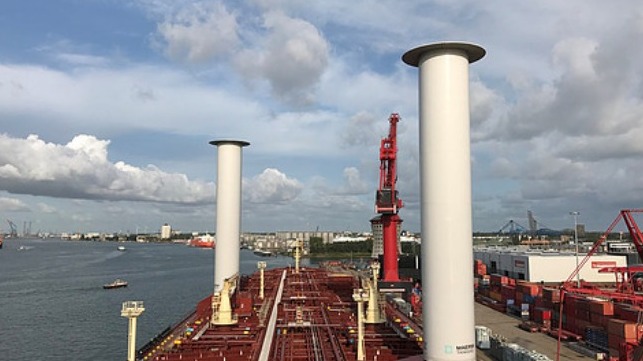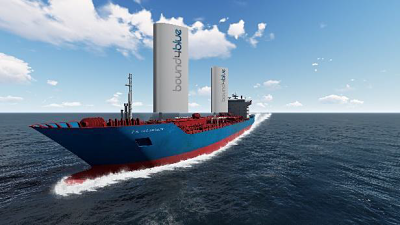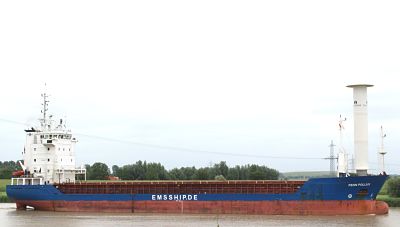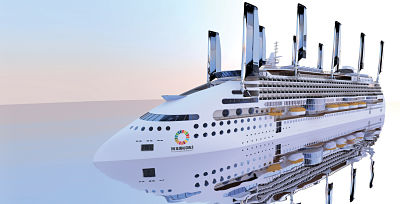Wind Propulsion Options on Show at SMM 2018

Wind propulsion technologies have gained attention, offering potential fuel savings of 10-30 percent for retrofit installations and up to 50 percent for optimized newbuilds. However, Gavin Allwright, Secretary General of the International Windship Association (IWSA), says: “the same misconceptions about commercial wind propulsion solutions keep coming around, many of these are rooted in old appraisals of technologies used decades ago or on perceptions of stepping backwards, however the wave of technologies and projects coming through now are firmly focused on a modern, decarbonized fleet fit for purpose in the 21st century.”
 Allwright is attending SMM 2018 in support of the five IWSA members that will be exhibiting at the event including; Norsepower, Bound4Blue, MARIN, MariGreen/MARIKO and Peace Boat - Ecoship, and he has highlighted five key misconceptions of wind power solutions:
Allwright is attending SMM 2018 in support of the five IWSA members that will be exhibiting at the event including; Norsepower, Bound4Blue, MARIN, MariGreen/MARIKO and Peace Boat - Ecoship, and he has highlighted five key misconceptions of wind power solutions:
Wind Propulsion is an Old Technology
While it is true that the harnessing of wind for vessels is millennia old, the technologies that are being developed now have built on that wealth of knowledge, updated the systems, introduced new materials and automated the operations.
Jarkko Väinämö, Norsepower CTO states, “Our Rotor Sails are a modernized version of the Flettner rotor, which was invented almost 100 years ago. We have implemented high-tech materials and state-of-the-art automation technology for developing a reliable, efficient and economically feasible Rotor Sail design.”
The New Rigs and Rotors are Untried and Untested
Rogier Eggers, senior project manager at MARIN states, “MARIN has already built a firm understanding of the performance of wind (assisted) ship propulsion and is continuing to broaden and refine its prediction methods. With this background we can assist to verify and improve performance together with operators, owners, yards, designers and wind propulsion suppliers.”
Allwright adds, “I often hear this straight after fielding the ‘old technology’ question. Over the last couple of years we have seen extensive R&D work, certification of designs by class and an increasing number of both prototypes and installations of rigs on vessels, all generating substantial data on performance and viability and this is set to continue strongly over the next 12 months.”
 A number of companies at SMM 2018 will be showcasing their prototype installations, these include a retractable wingsail designed by the Spanish company Bound4Blue to be retrofitted to two vessels over the next few months and results from MariGreen’s EcoFlettner sea trials on the MV Fehn Pollux earlier this year.
A number of companies at SMM 2018 will be showcasing their prototype installations, these include a retractable wingsail designed by the Spanish company Bound4Blue to be retrofitted to two vessels over the next few months and results from MariGreen’s EcoFlettner sea trials on the MV Fehn Pollux earlier this year.
Wind-Assist and Primary Wind Systems are only Suitable for Small Ships
“This is a common refrain and wholly inaccurate,” says Allwright. “Yes wind propulsion systems work very well on smaller vessels and there should be much more development in the fishing, general cargo, small ferry sectors, however there are wind propulsion solutions for all sizes and types of vessels, and in part that is the reason that different systems are being developed, as one size doesn’t fit all.”
Norsepower’s Rotorsails have recently been fitted to the Viking Grace and two 30-meter rotors on the 109,000dwt Maersk MV Pelican LR2 tanker. Peace Boat’s Ecoship design, which will be the world’s most sustainable cruise vessel, uses rigid sails as wind-assist on it’s 55,000 ton, 2,000 passenger vessel which will be built over the next few years.
 These Systems Need More Crew, More Training
These Systems Need More Crew, More Training
Some of the smaller, more traditional sailing rigs do need more sailing knowledge and crew, however most of the commercial wind propulsion systems are automated, turn-key solutions that are optimized through weather analysis, routing and other operational parameters.
Wind Propulsion is Costly, with High CAPEX and Long Return on Investment
Installing a wind propulsion system is not inherently costly, and the costs of manufacture and installation will come down as more rigs are installed. With an increasing choice of technologies, from lighter, easily installed rotors to larger more substantial rigs, there are variable costs and returns. Fuel prices are again on the rise making these systems more attractive, and the beyond compliance and future proofing of vessels is also a key advantage.
Allwright concludes, “If a leasing or rental agreement is used, then CAPEX outlay will be substantially reduced with the provider and ship owner sharing the savings in fuel costs. Wind propulsion also reduces the amount of bunkering and fuel storage required for a vessel, thus reducing costs associated with other alternative, low carbon fuels too, making those more cost efficient into the bargain.”
The opinions expressed herein are the author's and not necessarily those of The Maritime Executive.
